Intelligent Engineering
Our Intelligent Engineering solutions across products, plant and networks, combine our engineering expertise with advanced technologies to enable digital engineering & operations, develop autonomous products & platforms, and build sustainable energy and infrastructure
.png?width=774&height=812&name=Master%20final%201%20(1).png)
Transforming Tomorrow’s Copper Engineering Network Services
CyientTransforming Tomorrow’s Copper Engineering Network Services
Abstract
The evolution of telecommunications networks has been a critical driver of global connectivity, and copper cables, laid as early as the 1880s, have played a foundational role in this development. However, the aging infrastructure, particularly lead-clad cables, poses environmental and health risks. In response to growing concerns, telecom operators are under pressure to phase out lead-clad cables. This whitepaper explores the challenges associated with lead-clad cables and presents Cyient’s expertise in designing tomorrow’s copper engineering network services as a sustainable solution.
Introduction
Copper wire has been a mainstay in the telecom industry, serving as the backbone of communications networks for well over a century. Its prevalence dates back to the 1880s when telecommunications pioneers laid the first copper cables, establishing a robust infrastructure that facilitated global connectivity. Copper’s enduring popularity in the industry can be attributed to its conductivity, durability, and cost- effectiveness. Despite the prevalence of technologies such as fiber optics, copper wires continue to play a vital role in last-mile connectivity. They are especially integral in reaching homes and businesses worldwide.
The extensive use of copper wires in telecommunications networks is a testimony to their adaptability and reliability, making them integral to the evolution of communications technologies.
However, as the industry grapples with environmental concerns associated with aging lead-clad cables, there is a growing imperative to innovate and design tomorrow's copper engineering network services that not only meet the demands of modern communications but also adhere to stringent environmental and safety standards.
-4.png?width=1000&height=615&name=unnamed%20(1)-4.png)
Aging copper wires, especially lead-clad cables, in the telecom industry present environmental concerns due to several factors. The primary issue is the toxicity of lead, a component in the cables' sheathing material, posing health risks for humans and wildlife. Degradation of these cables can lead to lead leaching into water sources, causing water contamination and endangering aquatic ecosystems. Additionally, soil and air contamination can occur, impacting plant and animal life, and posing respiratory risks. The environmental impact extends to biodiversity, with potential disruption to ecosystems. As the industry faces pressure to comply with regulatory standards and Environmental, Social, and Corporate Governance (ESG) initiatives, addressing these issues becomes crucial. The challenge is to innovate and design copper engineering network services that not only ensure effective communications but also prioritize environmental responsibility and sustainability, aligning with the industry's commitment to eco-friendly practices.
Access Whitepaper
Cyient’s Role in Copper Network Engineering
Cyient, a recognized industry leader, is at the forefront of providing innovative solutions to mitigate these challenges.

Experience and Expertise
With over three decades of experience, Cyient has been a trusted partner for Tier 1 and Tier 2 telecom operators globally. The company specializes in accelerating network rollouts, implementing go-to-market strategies, and enhancing end- customer experiences. Cyient's comprehensive services cover the entire life cycle of copper networks, including field engineering, data conversion/migration, planning, design, construction, administration and maintenance, network decommissioning, and as-built updates.
The Cyient Edge
Cyient has a proven track record in implementing next- generation GIS systems, integrating with operation support systems (OSS), and managing large-scale data transformation programs. The company offers a range of services, from copper, fiber, and HFC network planning and design to BAU (business as usual) engineering services. This extensive experience positions Cyient as a key player in the evolution of copper network engineering.
Use Cases
Communications | Whitepaper 5 Cyient’s success stories highlight the company's ability to address diverse challenges faced by telecom operators globally. Some notable use cases include:

Network enhancement
Cyient has been instrumental in various facets of network enhancement for a Tier 1 US telecom network operator. This spans meticulous planning for network decommissioning, strategic fiber engineering plan and design, precise pole loading analysis, and ticketing for optimized infrastructure. Cyient also provides robust data management, covering conversion, migration, cleanup, and BAU records posting. The inclusion of site surveys ensures a comprehensive understanding of the network landscape, facilitating informed decision-making and efficient implementation.

Modernizing fixed access network capabilities
For another Tier 1 telecom network operator in the US, Cyient primarily focused on revolutionizing fixed access network capabilities. Through detailed planning and design, the operator has successfully executed the replacement of traditional copper infrastructure with advanced fiber optic networks. This strategic transition ensures not only enhanced network performance but also aligns with the industry's push toward faster and more reliable communication technologies.

Migrating clients from ADSL to broadband
In the Asia-Pacific region, Cyient collaborates with a Tier 1 CSP to facilitate the seamless migration of clients from ADSL to broadband. This involves intricate network decommissioning processes, ensuring a smooth transition for end-users. Cyient's expertise in navigating such transitions is evident in the successful execution of this project, showcasing the company's commitment to adapting networks to meet evolving technological demands.

Network optimization
Cyient's involvement spans critical aspects of network optimization for the largest telecom network operator in the UK. This includes rigorous field surveys for validation, meticulous planning and design for the replacement of copper infrastructure with fiber optics, and the implementation of robust data conversion and migration strategies. Additionally, Cyient introduces process and system automation, streamlining operations and ensuring a future-ready network that aligns with the operator's strategic objectives.
The Need for Transition
The degradation of lead-clad cables poses environmental and health risks, making it imperative for telecom operators to transition to safer alternatives. Governments and the public are exerting pressure on operators to adopt environmentally friendly practices. Recognizing these challenges, Cyient presents a strategic approach to designing tomorrow’s copper engineering network services.

Proven Record
Cyient has a history of successfully aiding global telecom operators in achieving their operational and business objectives.

End-to-end Solutions
From network planning and design to effective inventory management, Cyient provides specialized services to enhance the quality, time, and cost-effectiveness of network deployments.

Certified Expertise
Cyient’s industry-certified consultants, SMEs, engineers, and architects adhere to best practices. Certifications in eTOM, CCNA, and ITIL underscore their commitment to excellence.

Tailored Solutions
Cyient delivers cost- effective solutions uniquely tailored to the specific needs of each customer.
-4.png?width=1000&height=626&name=unnamed%20(2)-4.png)
As the telecommunications industry faces the imperative to phase out lead-clad cables, Cyient emerges as a key player in transforming tomorrow’s copper engineering network services. Cyient’s extensive experience, proven track record, and commitment to environmental sustainability make it a reliable partner for telecom operators navigating the transition to safer and more efficient network solutions. The evolution of copper networks is not just a technological necessity but a responsibility toward creating a sustainable and connected future.
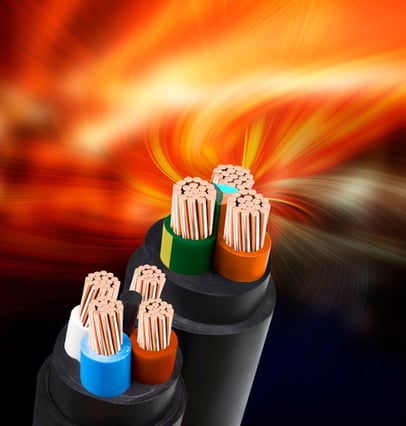
About the Author
Manavalan has 15+ years of expertise in cloud technology and has worked for Fortune 100 companies. He has extensive experience in aiding the deployment of cloud applications in enterprise infrastructures, and has worked in areas such as cloud computing, virtualization, database administration, automation, software development and DevOps. Manavalan has a successful track record of utilizing cloud services such as AWS, Azure, and Google Cloud to design, develop, and deploy applications with remarkable agility and ability. His technical expertise includes Infrastructure-as-a-Service (IaaS), containerization solutions (including DOCKER/Kubernetes), hybrid cloud infrastructures, DevOps, serverless orchestration of cloud services, and security and compliance standards (SOC2, PCI, HIPAA, GDPR).
Use Cases
4. RF Technology Use Cases in Modern Agriculture
Let us take a detailed look into the use of different RF technologies in modern agriculture.
SAR-based remote sensing for crop monitoring
SAR uses electromagnetic properties such as amplitude, phase, relative amplitude, and relative phase of radio waves reflected from the crops on which it is transmitting the signal. These EM properties can be mapped to a color map to identify the type, age, and health of the crops. The airplane carrying the SAR moves in a straight line at any point of time. Hence, consecutive time of transmission/reception of Figure 3. The SAR[1] principle of operation RF pulses translates into different footprints of the antenna beam on the ground. A coherent (synchronous) combination of the received signals allows the construction of a virtual antenna aperture that is much longer than the physical antenna length, giving rise to the term “synthetic aperture” and gives the radar the property of being an imaging radar. Figure 3 represents the SAR principle of operation.
![Figure 3. The SAR[1] principle of operation-1](https://www.cyient.com/hubfs/Figure%203.%20The%20SAR%5B1%5D%20principle%20of%20operation-1.png)
Figure 3. The SAR[1] principle of operation
Different types of crops respond to different RF spectrums. For example, tall and high biomass crops like sugarcane, maize, jute, and millets respond better to a lower microwave spectrum (1-2 GHz) whereas rice and pulses (low to medium biomass crops) are responsive to a slightly higher spectrum (4-8 GHz).
![Figure 4. SAR imagery for different crop types [2]](https://www.cyient.com/hubfs/Figure%204.%20SAR%20imagery%20for%20different%20crop%20types%20%5B2%5D.png)
Figure 4. SAR imagery for different crop types [2]
Further, crops at different ages reflect RF signals differently which gives an indication of crop ages (Figure 5).
![Figure 5. SAR imagery in different life stages of a crop [3]](https://www.cyient.com/hubfs/Figure%205.%20SAR%20imagery%20in%20different%20life%20stages%20of%20a%20crop%20%5B3%5D.png)
Figure 5. SAR imagery in different life stages of a crop[3]
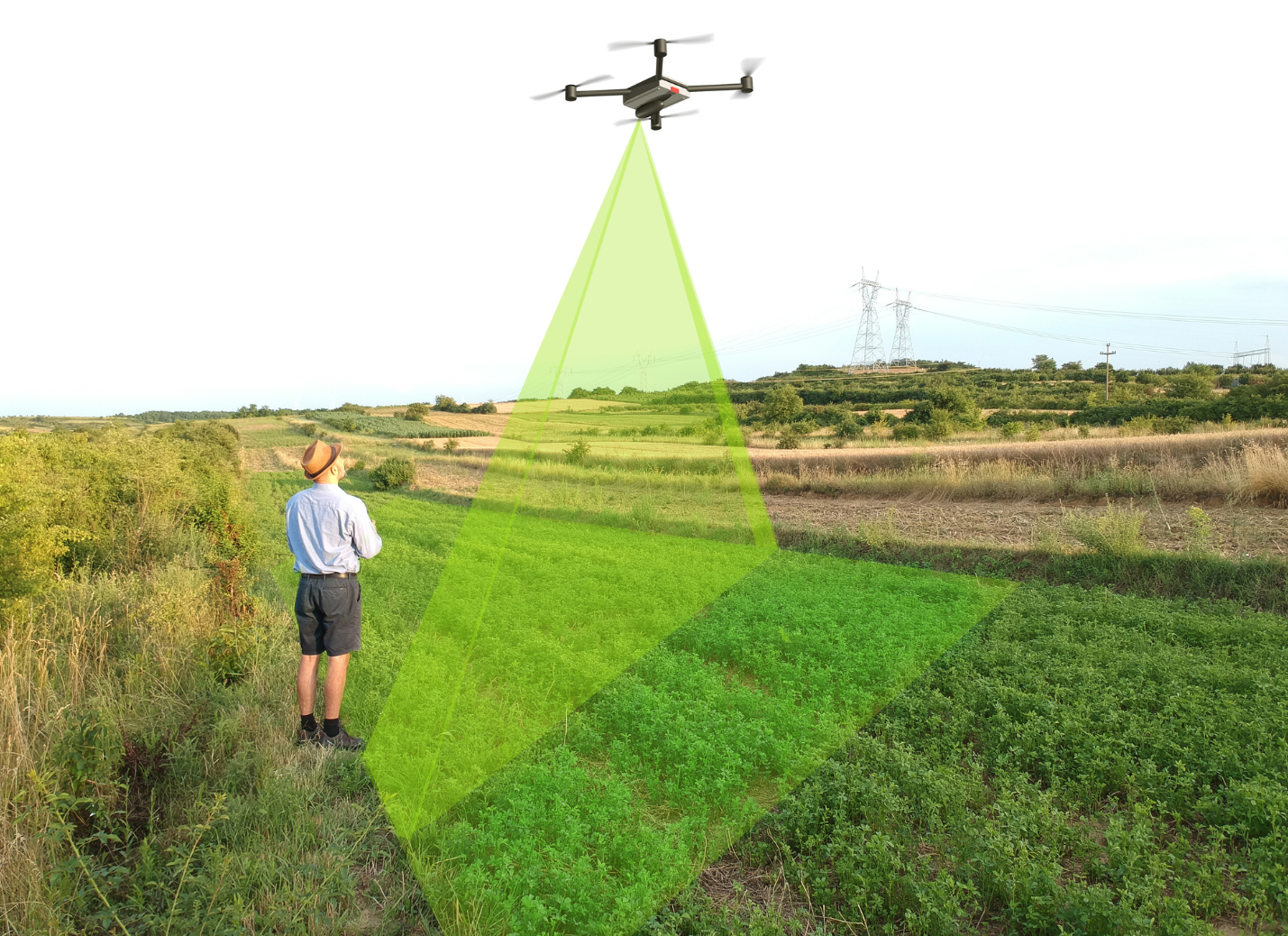
GPR-based soil study
To complement SAR usage in modern agriculture, GPR, being in closer proximity to ground, is used to study soil contents in detail. GPR sends a radio frequency signal toward the ground and part of it penetrates the ground. When the signal experiences the differences in the media, part of the penetrated signal is reflected back toward the radar and carries the relative characteristics of the media (see Figure 4(a)) . Electromagnetic properties of the signal are then mapped to an image representation with respect to survey coordinates (see Figure 4(b)). Usually, GPRs are pulled over the ground to collect data. With advancement of drones, GPRs are now being mounted on drones to provide faster mapping of large farming lands.
%20Concept%20of%20GPR%201.png)
(a)
![(b) GPR being used for soil survey [4], 2](https://www.cyient.com/hubfs/(b)%20GPR%20being%20used%20for%20soil%20survey%20%5B4%5D%2c%202.jpg)
(b)
![Figure 6. (a) Concept of GPR (b) GPR being used for soil survey [4], (c) Drone-borne GPR [5](https://www.cyient.com/hubfs/Figure%206.%20(a)%20Concept%20of%20GPR%20(b)%20GPR%20being%20used%20for%20soil%20survey%20%5B4%5D%2c%20(c)%20Drone-borne%20GPR%20%5B5.png)
(c)
Figure 6. (a) Concept of GPR[4] (b) GPR being used for soil survey [4], (c) Drone-borne GPR [5]
Using the EM properties of reflected signals and corresponding mapping to images, different layers of soil and their spatial distribution can be estimated with centimeter accuracy. These characteristics may be due to the lithology of the soil or due to presence of moisture, pollutants, agrochemicals. An example is shown in the figure below.

Figure 7. GPR imagery of soil: (a) Initial condition, (b) With movement of agrochemical agents [6]
Microwave heating
Studies have indicated the effectiveness of microwaves in drying material with water content and this property is useful in drying crops faster as compared to the conventional convection method. The role of microwave heating in pest control dates back nearly 70 years where lethal exposure of insects to a 12 MHz electric field was demonstrated. Recent experiments show that insects infesting dry products are quickly affected by microwave energy as the water content in their body gets heated. An application of microwave with controlled transmitting power helps in germination of seeds. Studies have shown that the use of microwaves during drying can be safe in seeds of soybeans, corn, and beans, among others. Many studies recognize that drying using microwaves has great potential as it reduces the drying time considerably. Other applications of microwave heating include microwave-assisted bio-fuel extraction and microwave-assisted pyrolysis (to convert biomass to an intermediate liquid product that can be refined to drop in hydrocarbon biofuels, oxygenated fuel additives, and petrochemical replacements).
RF communications in agriculture
Majority of the RF sensors described above are mounted either on airborne platforms or on a ground vehicle. Drones are the latest, most popular, and inexpensive airborne platform as compared to others. Drones are required to be controlled remotely using wireless technologies. A robust and long- distance RF communications system needs to be established for controlling and operating the drones as desired.
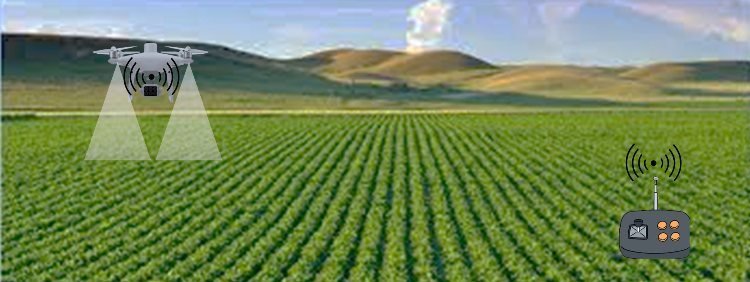
Figure 8. Remote-controlled drone for agriculture
With the advancement of technology, agricultural vehicles are adopting autonomy in their operations. The key elements of success for this are RF communications equipment and network infrastructure for a connected vehicle.
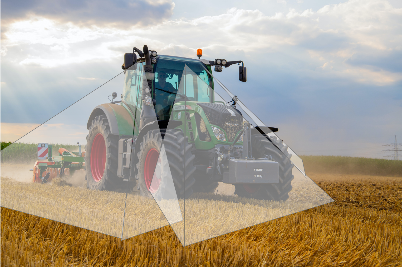
Figure 9. Agriculture vehicle with autonomy
5G technology in agriculture
The advent of 5G technology will revolutionize global farming landscapes and will open up multiple ways to establish and grow precision farming. The figure below shows that every element in modern agriculture once connected to a high speed and high throughput 5G cellular network, works in tandem with the other to optimize resources and maximize yield. The imagery generated from SAR and GPR demand throughput for transferring them to a distant and central location/data cloud. Similarly, to control farming equipment remotely, a low latency communications network in inevitable.
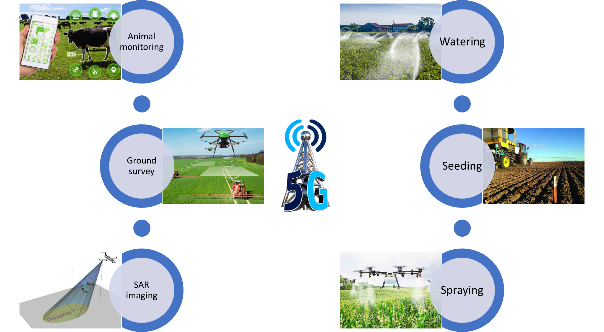
Figure 10. Uses of 5G technology in agriculture
Future of Hyperautomation
Hyperautomation will continue to evolve and redefine industries. Here are a few trends that could shape its future:
Hyperautomation as-a-service
Cloud-based hyperautomation platforms will become more accessible, allowing organizations of all sizes to leverage automation as a service. This democratization of technology will drive innovation across sectors.
Human-automation collaboration
Rather than replacing humans entirely, hyperautomation will focus on enhancing human capabilities.
Industry-specific solutions
Hyperautomation will be tailored to meet the specific needs of different industries. We can expect specialized solutions in sectors like healthcare, manufacturing, telecom, energy, and utilities addressing industry- specific challenges and requirements.
Enhanced cognitive capabilities
Advances in AI, ML, and Gen AI will lead to even more sophisticated cognitive capabilities, enabling systems to handle complex decision-making and problem- solving tasks.
IoT integration
IoT will become more tightly integrated with hyperautomation. Sensors and data from connected devices will be used to optimize and automate processes in real time.
Cross-industry collaboration
Industries will increasingly collaborate and share best practices for hyperautomation implementation. This cross-pollination of ideas will accelerate innovation and adoption.
Regulatory frameworks
Governments and regulatory bodies will establish frameworks to address the ethical and legal implications of hyperautomation, ensuring a responsible and fair use of the technology.
In the future, we can expect to see even more changes in the way hyperautomation is used and implemented. Advances in IoT, blockchain, and quantum computing will open opportunities for hyperautomation to be applied in new domains and enable it to automate highly complex tasks and processes.
5. Cyient’s Approach
As a technology enabler and solutions provider, Cyient works closely with industry experts to understand their concerns and challenges. With the vision of Designing Tomorrow Together, we enable our customers to apply technology imaginatively across their value chain to solve problems that matter. We aim to provide sustainable solutions and facilitate the adoption of disruptive technologies to conserve valuable resources. Cyient has decades of experience in helping customers worldwide to research, deploy, integrate, migrate, and support different embedded applications, communications networks, and RF technologies.
Sustainability is one of our key focus areas. The aim is to bring out solutions to optimize the use of resources and cater to the growing needs of the society. Technologies such as connectivity, IoT, and smart technologies play an important role in sustainability by reducing carbon footprints. Precision agriculture is one of the areas where embedded technologies such radio frequency technologies have immense potential to bring out solutions for a more sustainable future.

About Cyient
Cyient (Estd: 1991, NSE: CYIENT) partners with over 300 customers, including 40% of the top 100 global innovators of 2023, to deliver intelligent engineering and technology solutions for creating a digital, autonomous, and sustainable future. As a company, Cyient is committed to designing a culturally inclusive, socially responsible, and environmentally sustainable Tomorrow Together with our stakeholders.
For more information, please visit www.cyient.com